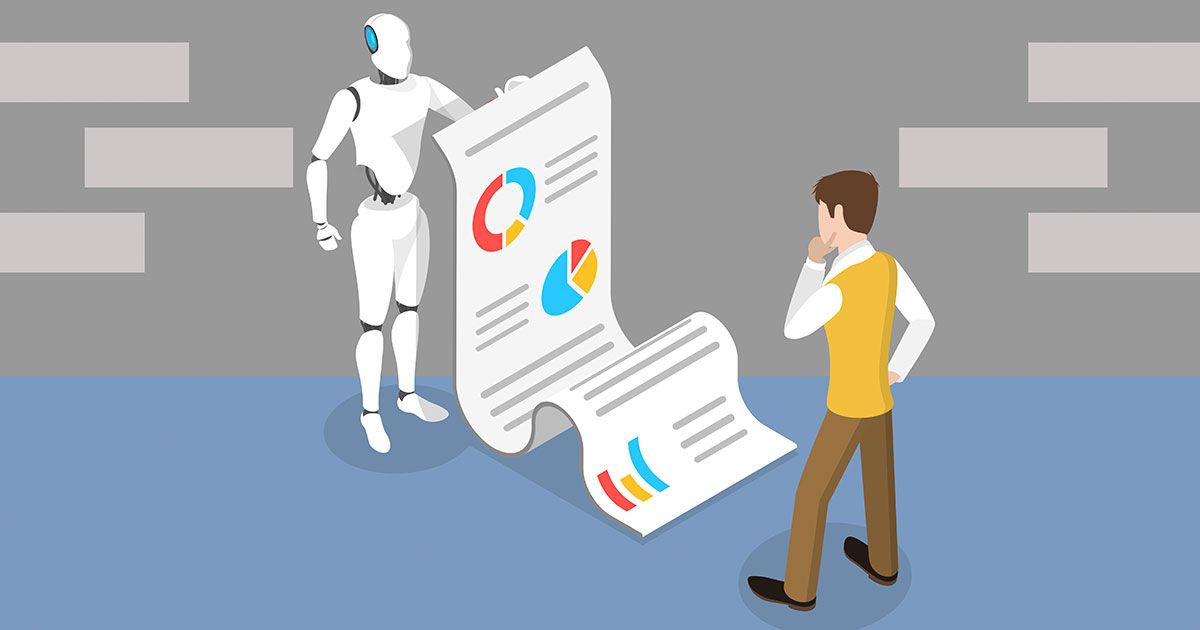Unmasking ChatGPT:
The Double-Edged Sword of Automated Content Creation
It’s only been 6 months since the launch of ChatGPT, and this Artificial Intelligence (AI) language model has become a widely talked about topic. AI has been making waves in various industries, and the recent release of the program by OpenAI is, at least on the surface, revolutionizing content creation. With over 57 million active users in just the initial launch, the platform has exceeded expectations and established itself as a dominant force for Software as a Service (SaaS).

As a full-service marketing agency, Villing+Company understands the importance of staying ahead of the curve while being aware of potential risks. ChatGPT does offer impressive capabilities, but relying solely on it for content creation comes with its own set of considerations. In this article, we’ll explore what the viral AI program is and some of its potential concerns.
Defining ChatGPT
What better way to define ChatGPT than by the AI language model itself? We posed the question to the program, “What is ChatGPT,” and this was the response:
ChatGPT is an AI language model developed by OpenAI based on the GPT architecture. It is designed to understand and generate human-like text based on the input it receives. ChatGPT can be used for various tasks, such as answering questions, providing suggestions, generating content, and engaging in conversations with users. Its knowledge, however, is limited to information up until September 2021.
As a agency with 40+ years of experience in communications, we instantly saw a problem in this response – the reliability and uniqueness of the information it can provide. To better understand the potential of ChatGPT, let’s first explore its advantages and then delve into the drawbacks as we navigate this emerging landscape of Artificial Intelligence.
Capabilities of Artificial Intelligence
Staying up to date on cutting-edge technology is essential for any business. But before delving into the concerns we have surrounding AI for the use of content creation, let’s first examine some of the positive factors associated with leveraging Artificial Intelligence:
- Time Efficiency: Significantly reduce the time spent on generating content, as it displays responses seamlessly.
- Cost-Effectiveness: The program has been free to use since its launch, sparking the interest of many in giving the AI language model a try.
- Scaling Content: Effortlessly scale content production, catering to growing demands and outreach efforts.
- Reduce Writer’s Block: Provides ideas, outlines, and even first drafts for topics in mind.
Since the program is widely used, it’s no surprise that there are numerous benefits of leveraging AI for content creation. However, this technology is in its infancy which poses some concerns that are crucial to know in 2023 and beyond.
Recognizing the Drawbacks
Across the digital landscape, from social media to online articles, headlines are leading mass groups of people into believing that AI can serve as a standalone solution for content creation, eliminating the need for any editing or revision. This ideology is entirely false, and it’s critical that individuals adopting this technology into their businesses be aware of this program’s uncertainties:
- Inability to Fact-Check: ChatGPT is only as reliable as the data it was trained on, which means it can provide outdated or inaccurate information. In an ever-changing business landscape, having up-to-date and accurate data is crucial for building trust and credibility. Relying on AI for content creation may inadvertently lead to the propagation of misinformation, which can damage your company’s reputation.
- Lack of Human Judgment and Intuition: While this program is an impressive language model, it needs more human judgment and intuition, central to understanding the nuances and challenges facing businesses in any given industry. Ethical considerations and emotional intelligence are crucial in creating content that resonates with your target audience, which this Artificial Intelligence is not designed to do.
- Bias and Discrimination: ChatGPT’s training data may include biases and discriminatory content, which could lead to the reinforcement of stereotypes and prejudice. In business today, promoting diversity and inclusion is important, and relying on AI-generated content might inadvertently undermine these values.
- Plagiarism and Intellectual Property Concerns: When creating content with ChatGPT, there’s a risk of inadvertently plagiarizing existing material or infringing on intellectual property rights.
- Loss of Authenticity and Personal Touch: Authenticity and personal touch are key factors that help differentiate your company’s content from competitors. Relying solely on AI-generated content may lead to a loss of these qualities, making it difficult to connect with your target audience.
Combining Human and AI-Generated Content
To harness the potential of ChatGPT without compromising on quality, always combine AI-generated content with human expertise. Only use AI as a tool to supplement human creativity and ensure accuracy, authenticity, and ethical considerations are maintained.
While ChatGPT’s technology has undoubtedly revolutionized the content creation landscape, it is crucial to understand that this program is not a one-stop-shop solution for all content creation needs. By maintaining a balance between human and AI-generated content, and educating users about the potential risks, you can harness the power of AI while mitigating its challenges. As a marketing agency, it’s our responsibility to stay informed and vigilant in the age of AI-generated content to ensure we provide the best possible service to our clients.